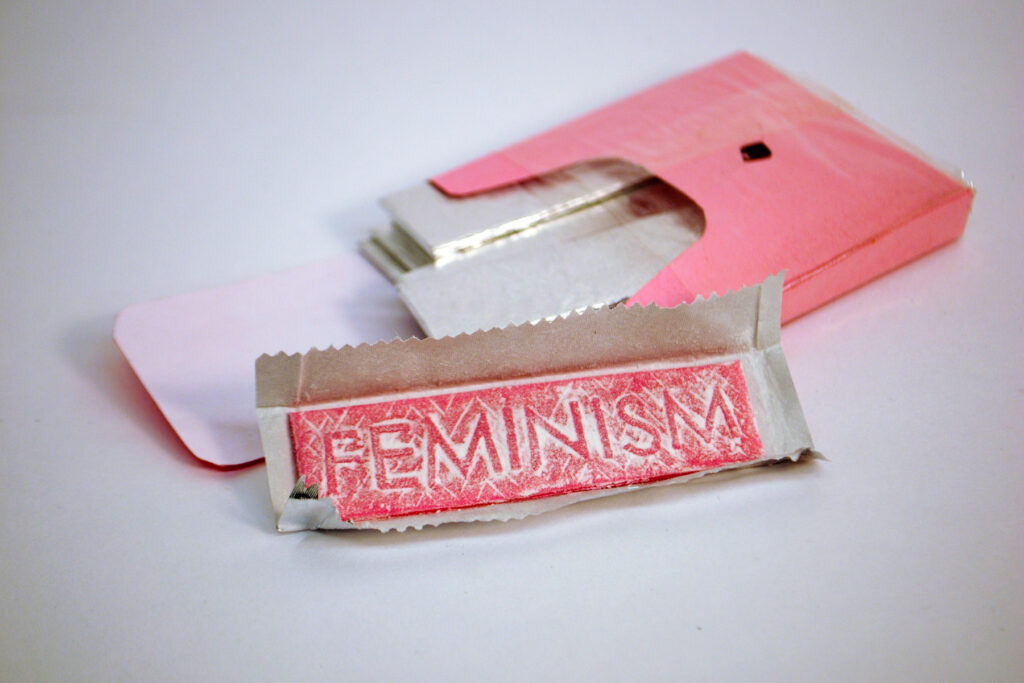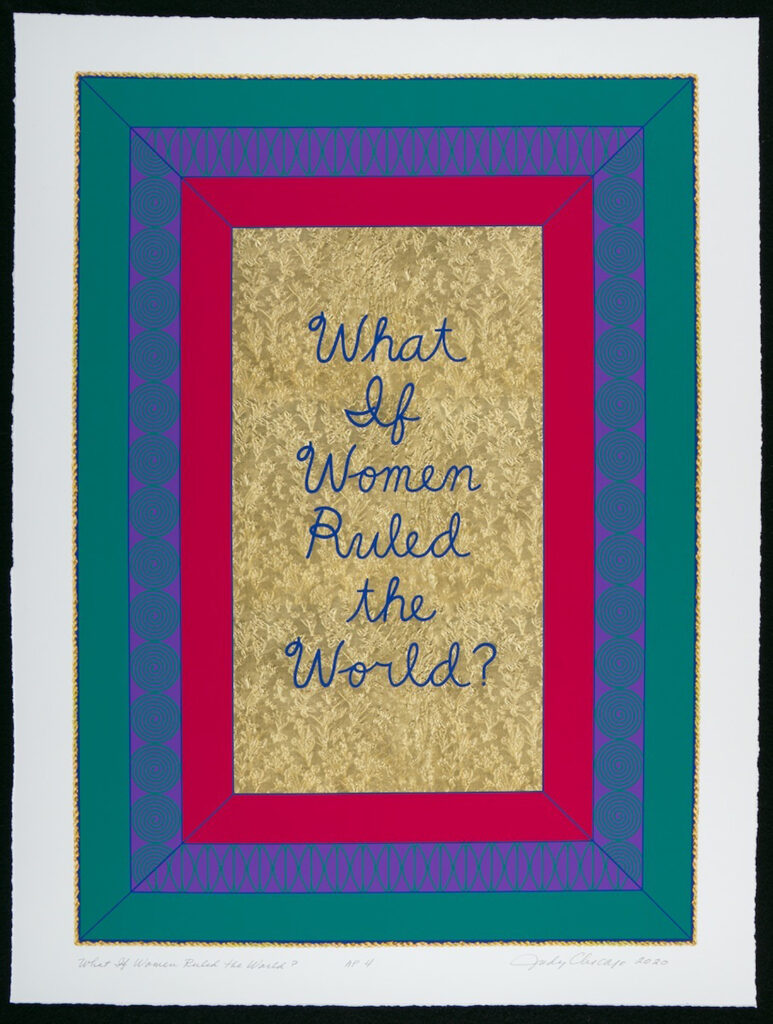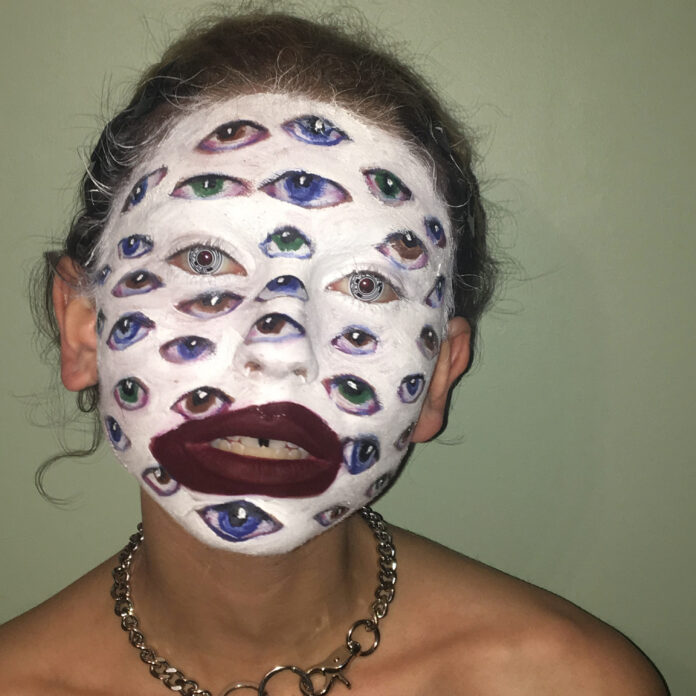Women are amazing. In every sense of the word. They are CEOs, politicians, mothers, care-givers, alchemists, farmers, champions of gender equality—sometimes all at once. The strength and power of feminine energy is critical in achieving balance as a species, and thank goodness it’s as strong and powerful as it is. Society would be lost without female insight.
Please note: The term “women” is a generalization, and it’s important to include those who identify as women, who don’t have the presumed “matching” genitalia, and anyone who has suffered under the oppressive qualities of patriarchal society.
Women in art have long dealt with the reality of patriarchal bias. A 2018 data analysis—by the National Museum of Women in the Arts (www.nmwa.org)—of 18 major art museums in the United States, showed 87% male representation. Of that 87%, 85% were white males. Representation in the art world is still wildly skewed towards white males.
Karen Gutfruend—curator, artist and feminist—is aware of these numbers, and she is part of the campaign to correct them. Her latest show, “Agency: Feminist Art and Power” is in direct response to the imbalanced representation of female and non-binary artists and artists of color, and an exemplification of how feminism is the acting antidote to the patriarchy.
A representation of 28 female and female-identifying artists, Gutfreund’s show is carefully and consciously curated to invite viewers into the reality of the feminine experience and the profundity of the feminist perspective.
Gutfreund says the idea for this exhibition actually originated two years ago. Gutfreund is a member of The Feminist Arts Project, based out of Rutgers University, and through TFAP met the director of the Museum of Sonoma County, and was commissioned to curate a show commemorating 100 years of women’s suffrage and the amendment of the Consitution to allow women to vote in 1920. Obviously, 2020 had other plans, and the show was postponed until 2022.
“My curation is very specialized—I focus on feminist art and social-justice art,” Gutfreund said in a call last week. “But I do it in a way that is accessible to the general public. My goal is to create exhibitions that are really geared towards generating social change. I’m not looking to sing to the choir, I’m looking to reach everyone; maybe you’re from a red state or a blue state or a purple state, but wherever you are, you can come in and see the work and engage in the programming and feel free to ask questions. My goal is for the work to inspire questions rather than enforce answers. It’s meant to create a dialogue. And the mass appeal of my exhibitions is what made the Museum choose my curation for this show.”
“I know through experience that the minute you start yelling at someone, visually or otherwise, they completely tune out,” she continued. “I try to focus on work that is universal and very beautiful. That beautiful, compelling quality of the work acts as a hook for the viewer, who then reads the story of the work, and engages more readily and easily with the statement.”


Perspective clash has been an acute reality since 2020, and the raised voices on either side of the line result in an incoherent cacophony.
“I do include work that is more in-your-face, but I try to focus on work that tells a beautiful, lyrical story,” Gutfreund said. “It really makes people pause and stop and think. I did a show recently on gun violence that resulted in a stauch, 50-year-NRA-card-carrier approaching me and saying, ‘Wow, I genuinely didn’t think about it this way.’ It’s about gently changing minds.”
The show was originally going to follow the theme of women’s voting rights more closely, but as a result of two Covid-caused delays, which allowed Gutfreund more time to deeply research and work with her substantial database of female artists—at last count she’s placed more than 1,400 female artists into exhibitions—she looked into the pertinent, hot issues society was engaging with and started looking at ways to incorporate them into the show.
“It’s a very cross-generational and very intersectional exhibition. We have everything from 90-year-old artists down to a 23-year-old artist,” Gutfreund said. “Having these different voices is so important. Encouraging us to look to our elders—artists like Judy Chicago or Joan Semmel or Dottie Attie, these women artists well-over 70—and consider everything they’ve lived through, all the hard battles they fought to get their work on the museum and gallery walls, and then considering our younger artists, just out of college, who bring such a different and important perspective as fourth- and fifth-wave feminists. We need their voices, too, and their stories. What is it like being a woman in your 20s right now, just coming out of the pandemic? The perspectives are so important to represent.”


Continued representation, through age, gender identity, political orientation and the myriad perspectives that the human collective holds, is where the best opportunity for better information and understanding lies.
“It’s about all these different, riveting voices,” Gutfreund said. “One of the artists in this show, for example, is an African-American woman from Alabama who deals with brutal racism. Another is a very urban, Brooklyn-based artist. Another artist is a drag queen from L.A. I learn something new every day this way. And I’m constantly, as the curator, really encouraging them to answer questions about what their intentions are with their art. Asking why they make what they make, and what they hope it does for the viewer. Because that’s what the viewers will read, when they engage with the art.”
Gutfreund is looking through what’s going on right now, in cultural conversations and political debates, and has curated this show as a representation of those conversations and debates, through both a historical and a contemporary feminist lens, giving platform to the still-underrepresented feminist perspective.
“I feel that feminist perspective is a liberation for the human, and I say that because I see how intersectional the movement has become,” she said. “As feminisim marches on, it represents non-binary people, trans people, people of color, anyone resisting patriarchical demands — it’s an inclusive justice movement. It’s giving voice and power to underrepresented groups. And this is why I curate shows like this. We’re leveling the playing field.”
“Agency: Feminist Art and Power” is showing at the Museum of Sonoma County through June 5. www.museumsc.org
SIDEBAR
Other Powerful Female Art Movers
Vibe Petaluma, an art gallery and intersectional community art space, is the dream-made-flesh of co-founders Rachel Usher, Maude Bradley, Margo Gallagher and Jessica Jacobsen. Ten days after an initial meeting to discuss plans and goals, the four signed a lease in downtown Petaluma. Vibe’s goal is to create an inclusive, accessible art space that is a hub of creative activity and ideation.
Magic Shop Studios, also located in Petaluma, is the result of artist Jennifer Tatum’s goal to create a studio space where artists produce their work. The beautiful building, which sits next to the water, includes six studios, a kitchen and extra storage space. Open studios, where people meet the artists and engage in lively dialogue about their work, are held there often.
A Beautiful Mess: Weavers & Knotters of the Vanguard, a nationally traveling exhibition on view now at the University Art Gallery at Sonoma State, features 10 different women artists, all of whom build their work with weaving or knotting as the primary method of production. This show creatively explores the boundaries of fiber arts and mixed media, and features artists such as San Francisco-based Windy Chien and Chicago-based artist Kira Dominguez Hultgren. The exhibition pushes against weaving as a “hobby” and highlights it as a high-art medium. The show is on view through April 10.












This exhibition was also a collaboration with Connie Tell of The Feminist Art Project, Rutgers University.